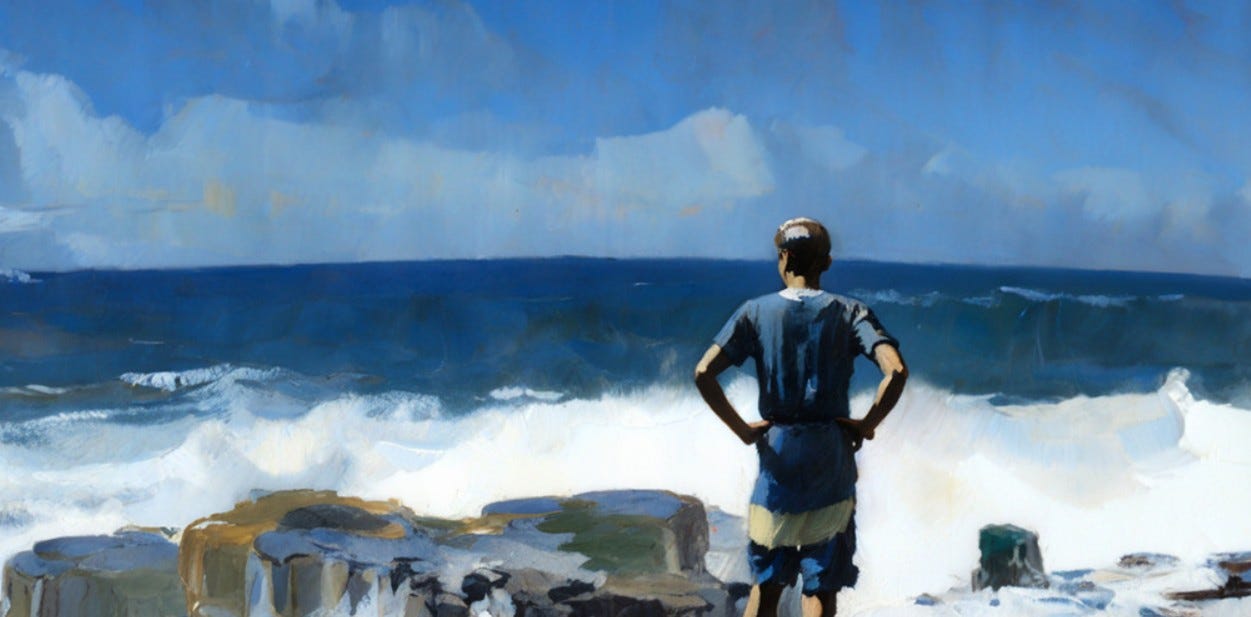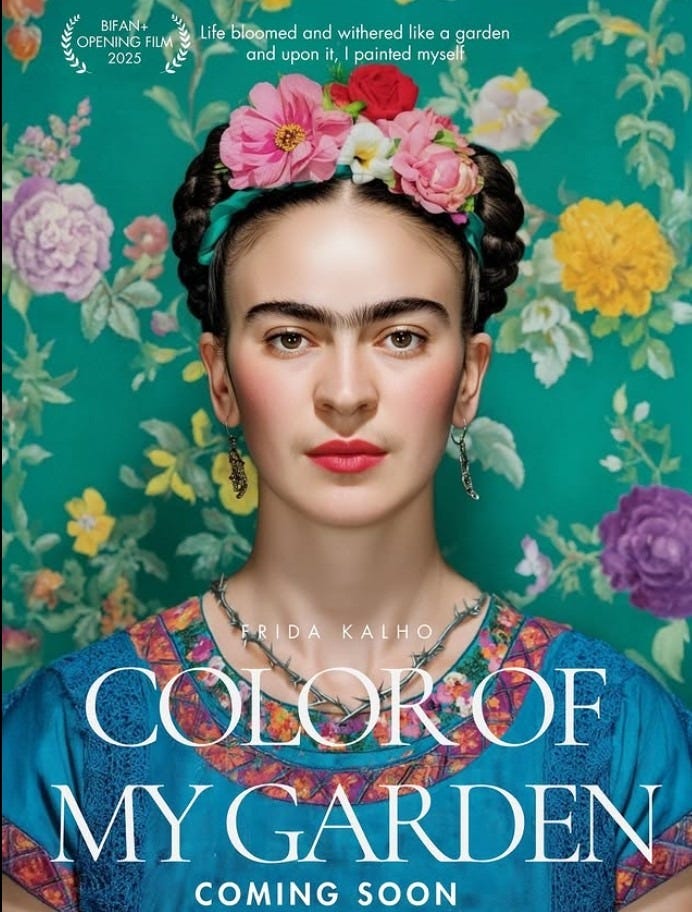Confessions of an AI Novice at the Bucheon Film Festival
Watching AI change everything about production and nothing about storytelling.
Over the course of three days in Korea, I watched all eleven of the films selected by the Bucheon International Fantastic Film Festival (BiFan) for its AI competition, along with two and a half others. Indeed, by an unintended quirk, I ended up watching most of the films twice. And nearly all of them both on a big screen, as well as a computer.
My curiosity had been stimulated by the heavy emphasis that some of the BiFan programmers have put on the emerging AI tech. It is a controversial swing that risks turning BiFan into an AI film festival, rather than the leading genre festival that it has been for nearly three decades. And not everyone is happy about that.
Festival director, Shin Chul, however, argues that embracing the new and challenging is both a matter of professional survival and living up to the event’s longstanding motto “stay strange”.
I also attended four of the six sessions that made up the three-day BiFan+AI conference which had substantial financial backing from the Bucheon municipal authorities.
The conference aimed to provide some technological updates and commercial underpinnings for the emerging AI content creation business for an audience that appeared to be a mix of students and creators. Stretched to three days, it lacked the punch that last year’s shorter BiFan+AI event boasted. That had included informed discussion of policy and regulation as well as how-to sessions on voice synthesis, lip-synching and language conversion.
Speakers at the 2025 edition of the conference ranged from a handful of already experienced practitioners through to executives who seemed to be as much at sea as I am, mouthing banalities about tools that don’t threaten jobs.
Among the most impressive doer was Roy Oh, the Korean director of “Color of my Garden,” a 20-minute autobiographical drama about the hardships and setbacks that made early 20th century Mexican artist Frida Kahlo into a distinctive and colourful surrealist painter.
The film divided opinion among film executives when it was given a surprise preview at the opening ceremony of the BiFan+ / NAFF opening market.
The technology was used to stunningly recreate Kahlo, her entourage and her paintings (the artist provided a wealth of self-portraits that are presumably out of copyright on which to train the machine) and helped the narrative to swirl between narrative and Kahlo’s imaginative.
Some NAFF visitors found the film boring – it was too chronological and unchallenging. Some found it artificial. And others criticised it for not using real actors.
My conversation with Oh, a former engineer and pharma exec without formal film training, was revealing. He has had his own AI film company and YouTube channel since 2023 and has had dozens of previous creative trials and errors. The Kahlo film emerged from his previous reinterpretations of historical paintings as electronic catwalk shows.
To achieve his result, Oh used some 20 different subscription-based AI tools across five different stages of the production process – creating prompts, image generation, video conversion, audio and music composition and upscaling – which seemed to be significantly more than other filmmakers at the event.
No wonder then that Oh said that his biggest costs are software subscriptions (not actors and technicians) with a monthly bill which must run into thousands of dollars.
Oh’s familiarity with the tools meant he was able to make an entire film with 2,000 edits inside a week. It included a music score that came close to being a full soundtrack.
No wonder either that Oh’s mantra is that AI filmmaking is not tomorrow’s fantasy, but is already today’s reality.
Full-length feature films made with AI are now in the pipeline. But some of the speakers asked if the 90 to 120-minute feature format is necessary, or desirable.
The answer to that will likely depend on how and where a “film” is to be commercially exploited. If the expectation is revenue-generating theatrical release, then something like feature length will be expected by paying audiences.
But in an age where some audience members are already creating unauthorised fan-cuts that reduce films and TV episodes to more snackable length for attention-deficit consumption on YouTube or other public platforms, then making a two-hour movie will increasingly seem like a waste.
“Instead of thinking narrowly about producing visual content, AI is becoming a huge optimizer," said frequent BiFan guest Sten-Kristian Saluveer, CEO of Storytek and strategic advisor for Cannes NEXT, who this year delivered a lecture by video.
His message seemed to be that one thing will not change: good filmmakers will succeed, while weaker one will be left behind.
He may have a point. The ratio between good and bad among the BiFan AI films seemed little different to that when I watched some 26 conventionally-produced short films in a brief spurt at last year’s Macao International Shorts Film Festival.
The other AI films I watched at BiFan 2025 ranged from the highly proficient, through small, but charming, to a one that was stomach-churning.
The brashest was a highlight reel from currently in-production feature “Brutal Seoul.” Backed by Korea’s National Heritage Promotion Agency and Studio Free Willusion, it borrowed inspiration from “Mad Max,” “Jurassic Park” and “Crouching Tiger, Hidden Dragon” among other kinetic titles. Although images were still obviously artificial, the film’s camera movements, angles, scale and edits were all normal and unobtrusive.
The most disturbing film I watched was “Voice”, a short that has four talking heads discussing their past trauma – as a comfort woman, as a victim of unprovoked violence on the subway and as a survivor of the 2022 Itaewon disaster. But it used closeups of animal heads in place of human faces.
While the film was clunkier and less polished than “Color My Garden”, watching a synthesised deer and a dog talking about pain defused my discomfort with their wretched stories. There is an obvious parallel with Cambodian-French director Rithy Panh’s 2013 feature film “The Missing Picture”, which cathartically used clay figurines to discuss dictator Pol Pot’s state-sanctioned murder campaign.
Among the AI competition films in BiFan, the most satisfying blend of story and technology, and by far my favourite was “Remembering” (pictured above). Starting with an old-fashioned analogue record player as a as metaphor for imperfect memory, it dissolved into a flickering watercolour animation complete with dreamscapes, hints of dementia, and a topical warning that if we don’t cherish our history we are bound to repeat it. Satisfyingly, the film’s end credits revealed that in addition to the machine production, it used real human actors and musicians.
So, I did not fully agree with the two sets of prizes, one series award by a jury, the other based on audience voting (below). But then, I suspect that I still need to improve my AI vocabulary.
2025 'Bucheon Choice: AI Movie' awards
Best Picture (worth KRW10 million)
“Last Dream” dir. Kushida Takeshi
Time Tree Technology Award (worth KRW5 million)
More Tears Than Harm dir. Herinarivo Rakotomanana
Audience Award winner
“Mold” dir. Kim Woon-ha
Audience award, special mentions (two)
“Confession” dir. Jang Gun-ho
“Total Pixel Space” dir. Jacob Adler




